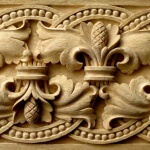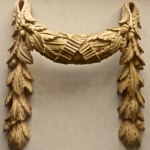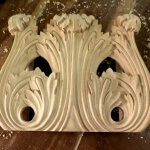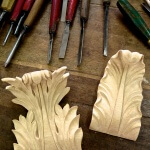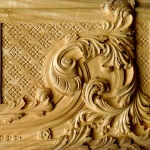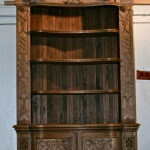Baroque architecture was visceral with a sense of drama. It demands boastful massing and the use of audacious colonnades and domes. Originating in Italy during a flamboyant period between the early 17th and mid-18th centuries, the Baroque style quickly spread through Europe and parts of Central and South America. The word Baroque has etymological roots in the French, Spanish, and Portuguese words for describing an irregularly shaped pearl. It was intended to be a derogatory term to describe something ostentatious or theatrical.
Often the Baroque style of ornamentation has elaborate and complex Putti figures, which are literally “chubby babies.” Swags of carved foliage and garlands of flowers can also be seen in abundance in the woodcarving, art and architecture of the period. Monograms and coats of arms were often featured to show ownership and status. Sumptuously decorated staterooms joined throned bedrooms via elaborately carved staircases. This style can be seen in many of the palaces in Europe, including the 17th-century examples of Versailles and The Chateau de Masons built around Paris. Reaching its zenith in France during the reign of King Louis XV, it would later pave the way for Rococo.
- Baroque-style band woodcarving by Agrell Architectural Carving
- Baroque-style swag woodcarving, based on a design found at Strahov Abbey in Prague and hand-carved by Agrell Architectural Carving
- Baroque-style acanthus woodcarving, based on a column base design found at Strahov Abbey in Prague and hand-carved by Agrell Architectural Carving
- Baroque-style acanthus woodcarvings, based on a cornice design found at Strahov Abbey in Prague and hand-carved by Agrell Architectural Carving
- Baroque-style panel woodcarving, hand-carved by Agrell Architectural Carving
- Baroque-style walnut bookcase, built and hand-carved by Agrell Architectural Carving
(Source: Handbook of Ornament by Franz Sales Meyer)


